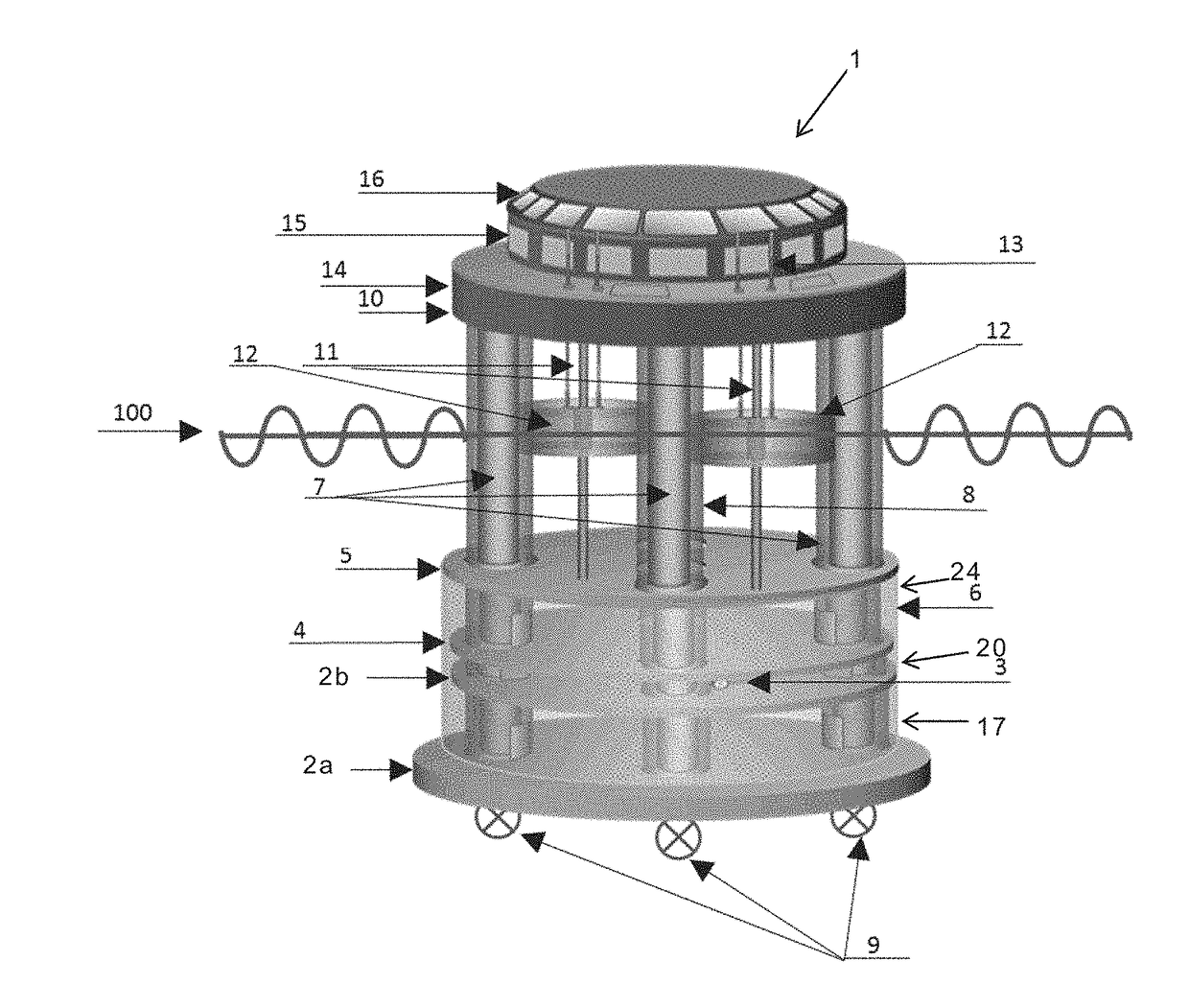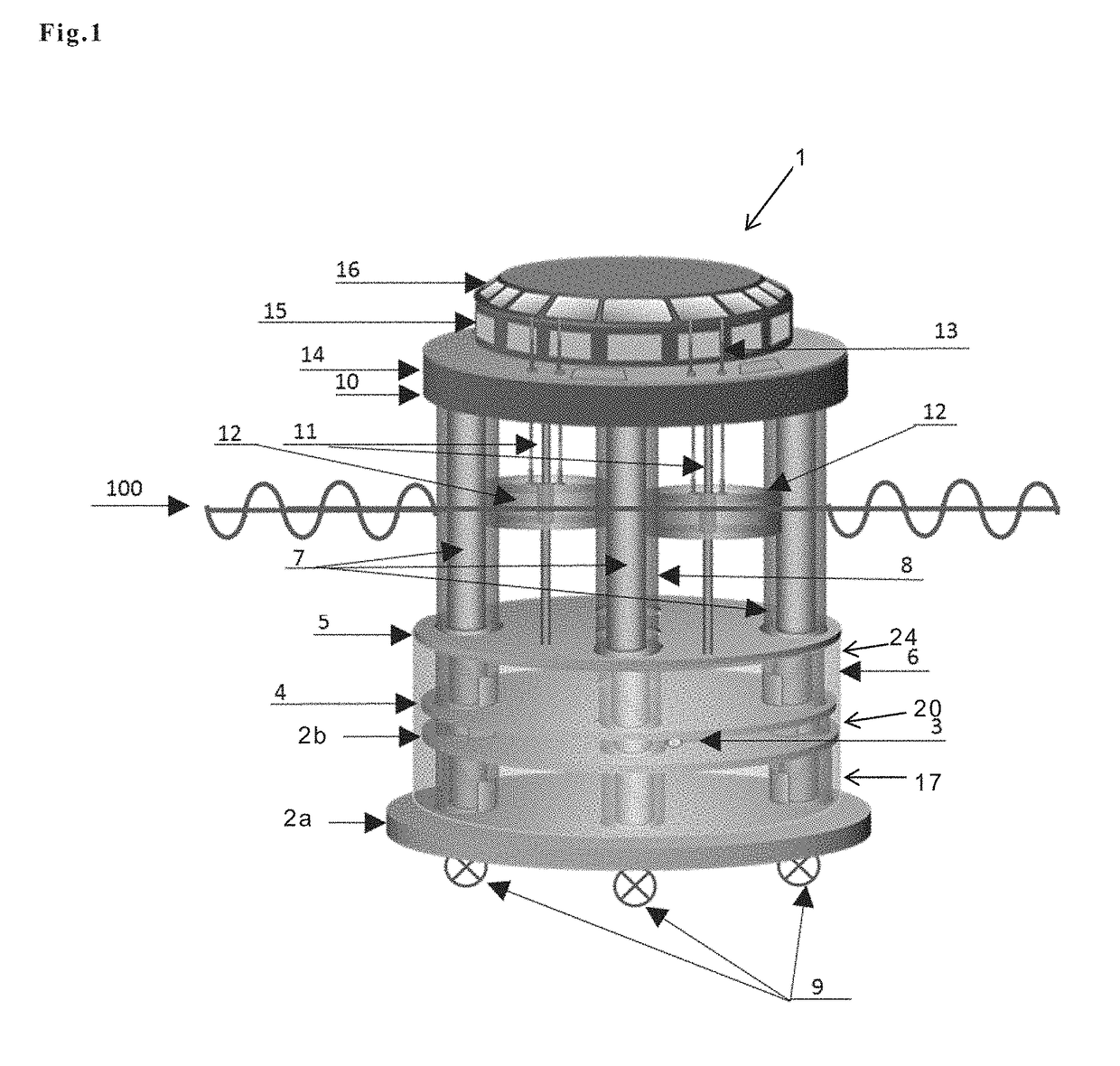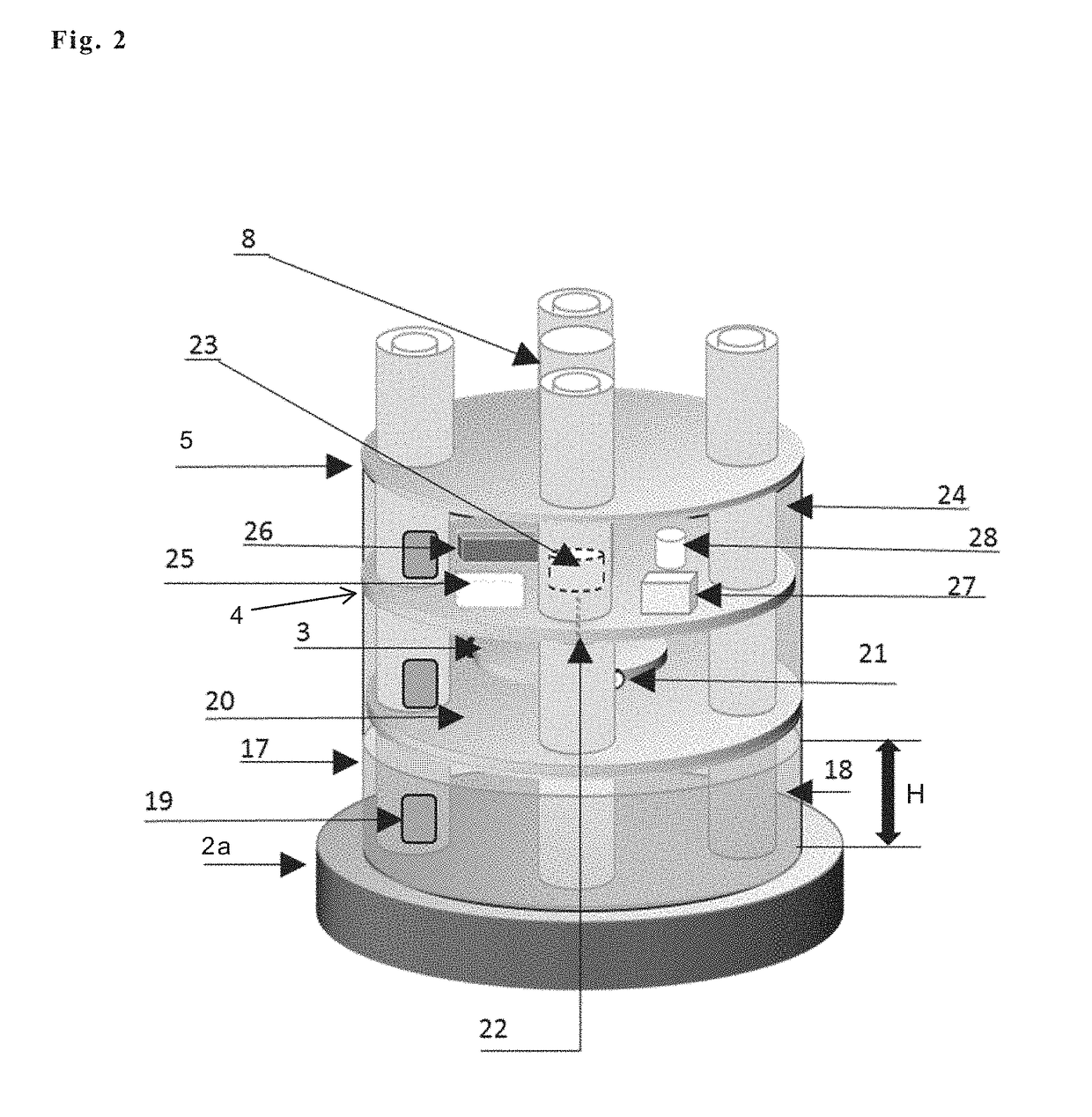Floating wave energy conversion island platforms
a technology of floating wave energy and platform, which is applied in the field of platforms, can solve the problems of high cost of component and implementation, high risk of damage caused by high waves, tsunami, typhoon, etc., and achieves the effects of ensuring the safety of the platform, reducing the risk of environmental impact and sea risks, and being easy to move into pla
- Summary
- Abstract
- Description
- Claims
- Application Information
AI Technical Summary
Benefits of technology
Problems solved by technology
Method used
Image
Examples
Embodiment Construction
[0024]Referring to the drawings a description will be given of the embodiments of the present invention.
[0025]In FIG. 1, an outline of the semi-floating structure of the island platform 1 is presented with respect to sea level 100 with the submerged, partially submerged, and emerged sections identified and described as follow.
[0026]The island platform 1 has a structure in which a fixed ballast 2a, a variable ballast chamber 17, a gyroscope chamber 20 and one or more production chambers 24 are stacked from the base in the submerged section. The submerged section is also formed by large circular disks constructed of reinforced concrete or similar construction material which forms fixed ballast 2a, the variable water ballast chamber ceiling 2b, gyroscope 3, gyroscope chamber ceiling 4, and production chamber ceiling 5. The variable water ballast chamber ceiling 2b defines the top side of the variable ballast chamber 17 formed on the fixed ballast 2a. The chambers 17, 20 and 24 each are...
PUM
 Login to View More
Login to View More Abstract
Description
Claims
Application Information
 Login to View More
Login to View More - R&D
- Intellectual Property
- Life Sciences
- Materials
- Tech Scout
- Unparalleled Data Quality
- Higher Quality Content
- 60% Fewer Hallucinations
Browse by: Latest US Patents, China's latest patents, Technical Efficacy Thesaurus, Application Domain, Technology Topic, Popular Technical Reports.
© 2025 PatSnap. All rights reserved.Legal|Privacy policy|Modern Slavery Act Transparency Statement|Sitemap|About US| Contact US: help@patsnap.com



